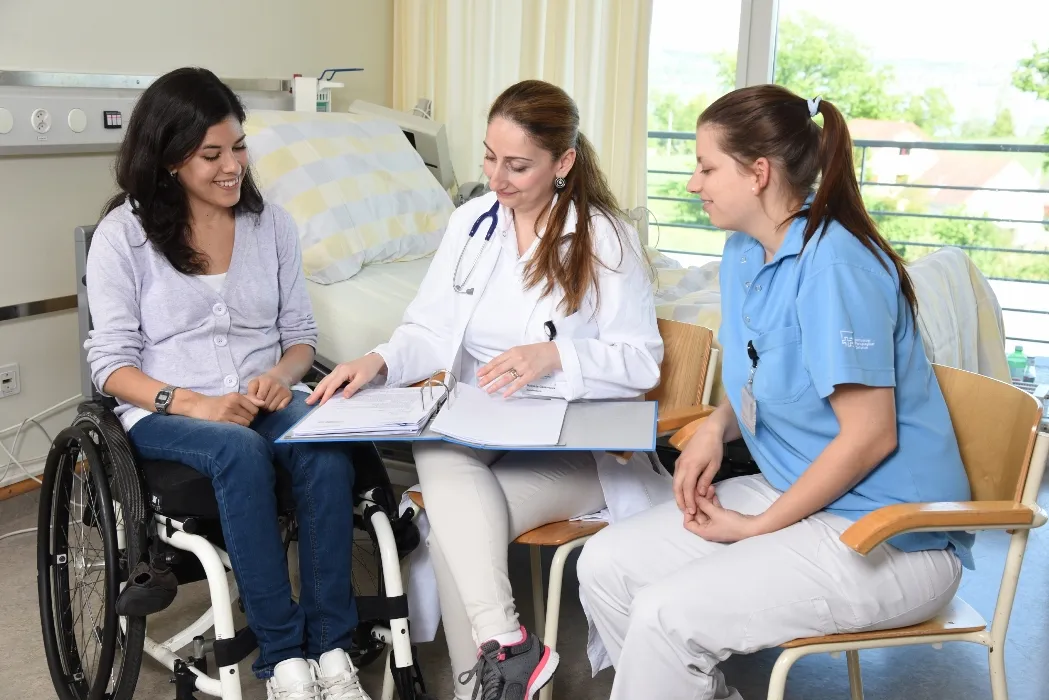

Donations and estates can be allocated to a fund if desired. Each fund has a precisely defined purpose. In this way, the Swiss Paraplegic Foundation ensures that your interests and personal values are taken into account in the long term.
The benefits to you of selecting a fund for your donation or estate:
- All the fund's resources are used exclusively for projects and services for people with a spinal cord injury in Switzerland.
- Every year, an audited report is published showing how the money from your estate has been used.
- The Swiss Paraplegic Foundation communicates regularly and transparently about the activities of its funds. You can obtain information at any time about how your donation is being used.
- There are no administrative costs as the ongoing operation of the Swiss Paraplegic Foundation is covered by the membership fees of the Benefactors’ Association.

Comprehensive rehabilitation of paraplegics at the Swiss Paraplegic Centre.
By choosing a donation category, you will determine how your donation or bequest will benefit people living with spinal cord injury.